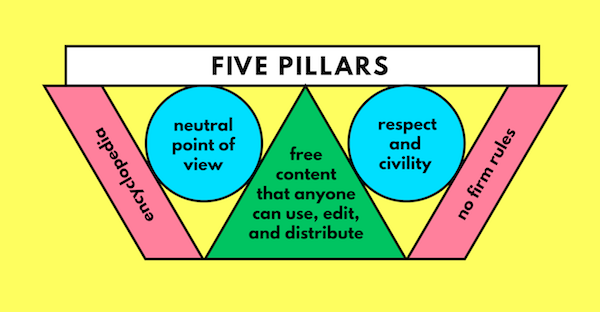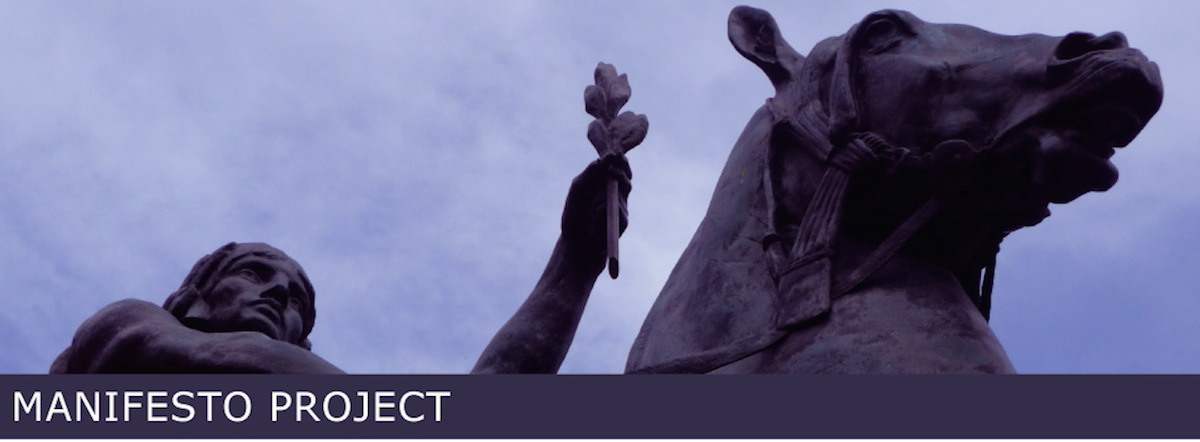Creator
Wikipedia is a free online encyclopedia and one of the most popular websites on the Internet. Started in 2001, the site now has almost six million articles.
Purpose
Wikipedia is an example of a decentralized organization. Volunteers edit the pages collaboratively. There are currently 70,000 editors who regularly update articles.
To manage this process, the team is guided by Editorial Principles embodied by the five pillars.

Manifesto
Wikipedia is an online encyclopedia.
Wikipedia has a neutral point of view.
Wikipedia is free content that anyone can edit and distribute.
Wikipedians should interact in a respectful and civil manner.
Wikipedia does not have firm rules.
Source
http://en.wikipedia.org/wiki/Wikipedia:Five_pillars
http://en.wikipedia.org/wiki/Wikipedia
Comment
Perhaps the biggest surprise here is that a simple five line statement can be the key guidelines for managing a team of 70,000 volunteers.
Despite the apparent simplicity, there is a lot of information that is presented in these five pillars.
The first pillar states precisely what Wikipedia is – an online encyclopedia. This provides an important boundary – online only.
The second pillar states crucial assessment criteria – a neutral point of view. This means any one of the editors can judge if an article meets this criteria. While not perfect, it provide a basis for discussion.
The third pillar described the organisation of the information – free, anyone can edit, anyone can distribute. As the name suggests an open-editing system, a wiki, is therefore needed.
The fourth pillar states two crucial things. Firstly, it gives a name to the people who edit: Wikipedians. While not an easy word, it is useful. Secondly, it provides a simple rule for how these people will interact with each other – respectful and civil.
The fifth pillar is perhaps the most crucial and allows such a simple set of guidelines to work: there are no firm rules. Most people and most organisations would struggle with such a concept. In this case, as a decentralized organisation it throws the power over to the editors (the Wikipedians) to manage, control and sort out any problems amongst themselves.
In summary, Wikipedia works because these Five Pillars call a community together and gives them permission to lead and create the online encyclopedia, which is the mission of the organisation.
The proof that this works is the way the community safeguards the information. Given anyone can edit, it means anyone can also vandalise what has been created. And this does happen often.
However, it’s the power of the community that bands together to monitor what has been updated and to self-enforce pillar two, to keep a neutral point of view.
Ironically, the strength of these simple organisational principles is that the community of editors is in charge and takes ownership of the site and its content.
More
Geelong Football Club Theme Song – one way to unite a community
The Cloud Appreciation Society Manifesto – uniting people around their love of clouds
Stephen Johnson – The Third Place Manifesto – the importance of community as capital
